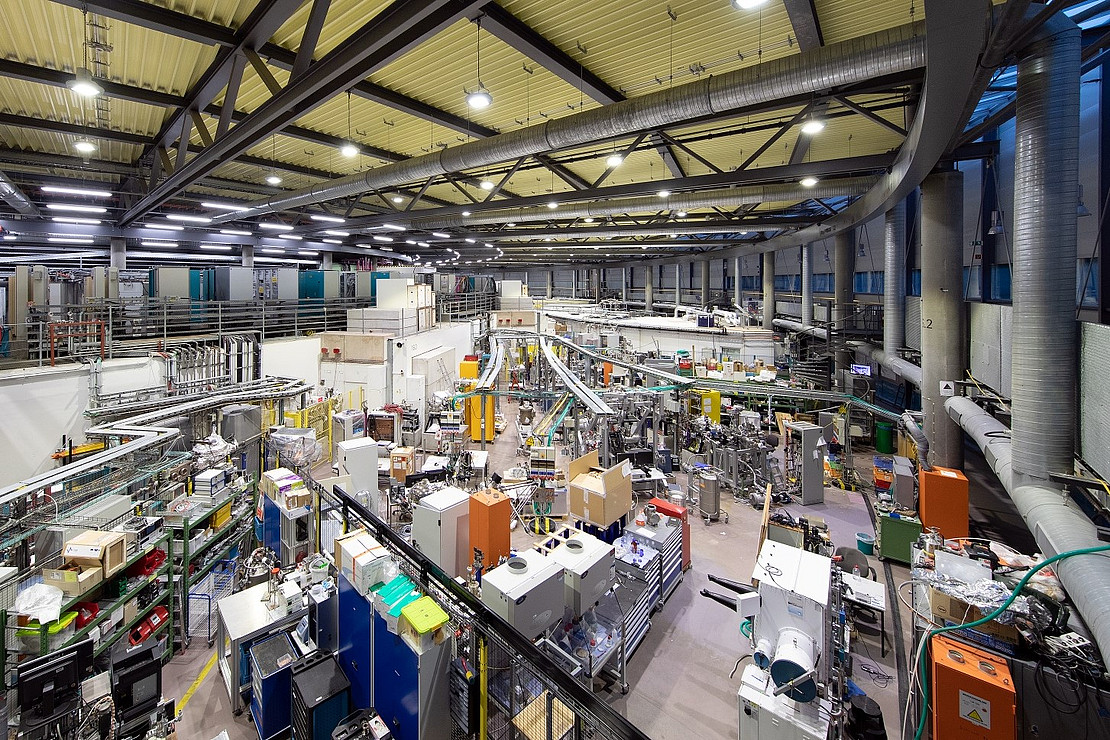This page contains automatically translated content.
University of Kassel and Helmholtz-Zentrum Berlin conduct joint research in new Joint Lab
 Image: HZB/M.Setzpfand.
Image: HZB/M.Setzpfand.The flagship of Helmholtz-Zentrum Berlin is BESSY II - this large-scale research facility for generating intense electromagnetic radiation enjoys an excellent reputation among researchers worldwide. With the help of X-ray light from BESSY II, they are gaining insights into, among other things, the efficient production of hydrogen from sunlight, new active substances against cancer, or quantum materials for energy-efficient IT technologies of the future.
"When researching current scientific questions, for example at BESSY II, so much data accumulates that it is difficult to evaluate it with conventional analysis programs. Artificial intelligence methods are being developed and used for this purpose in the Joint Lab. These methods should also make it possible to think up completely new experimental scenarios in other scientific and technical fields that in the past seemed impossible to evaluate," says Prof. Dr. Arno Ehresmann. He is vice president at the University of Kassel, where his responsibilities include research funding.
The Helmholtz-Zentrum Berlin and the University of Kassel have therefore recently signed a cooperation agreement to establish the Joint Lab "Artificial Intelligence Methods for Experiment Design (AIM-ED)". A Joint Lab is an established form of cooperation with universities in the Helmholtz Association that is designed for the medium to long term. "We are pleased to be able to combine the expertise of the University of Kassel and the Helmholtz-Zentrum Berlin in artificial intelligence to work together on groundbreaking questions," Prof. Ehresmann described.
For example, Kassel's Institute for Information Technology Design (ITeG) will participate in the joint lab. "Several physics research groups that are particularly strong in research will also be working on the application of AI methods for the design, evaluation or optimization of experiments, including within the framework of a DFG Collaborative Research Center," says Prof. Ehresmann. Also involved will be the Intelligent Embedded Systems department headed by Prof. Dr. Bernhard Sick, who has long been intensively involved in machine learning and artificial intelligence issues.
A collaboration between the Joint Lab and the Hessian Center for Artificial Intelligence is also a sensible prospect in Prof. Ehresmann's view: "I will seek discussions here with possible other partners at other Hessian universities," says Prof. Ehresmann. "At the same time, we are first of all pleased to be able to offer new colleagues here in Kassel such excellent prospects for internationally top-class research in an innovative and exciting field of research."
There are many synergy effects from the newly established Joint Lab, also emphasizes Dr. Gregor Hartmann, supervising researcher at Helmholtz-Zentrum Berlin. "The experiments at BESSY II generate immense amounts of data, and in addition to the size of the data, the complexity and understanding of their origin are particularly crucial for good analysis." HZB has a great deal of expertise in beamline development, while Prof. Ehresmann's group contributes its perspective as a long-time BESSY II user and detector know-how. The wide-ranging artificial intelligence methods covered by Prof. Bernhard Sick's team are absolutely necessary to achieve the best possible evaluation of the data, Hartmann said.